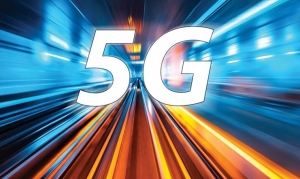Mobile data traffic to grow strongly in Southeast Asia
The latest report, the 25th edition, outlines several highlights of the Southeast Asia market. Specifically, 5G subscriptions will reach around 550 million in Southeast Asia and Oceania by the end of the decade.
Beyond creating the initial 5G infrastructure in the region, the focus of the service providers is towards diversifying service offerings for both consumers and enterprises. Enhancing customer experience, expanding network coverage, and promoting digital transformations for businesses remain top priorities across the region.
“We have been leveraging our technology leadership to deliver a world-class consumer experience to the expansive 4G installed base in Vietnam – which can seamlessly be upgraded to 5G when required. 5G will provide the critical infrastructure that will accelerate the digital transformation of Vietnam,” said head of Ericsson Vietnam, Rita Mokbel.
“In the initial phase, 5G will enable service providers in Vietnam to provide enhanced mobile broadband experience to consumers and enhance the capacity of the networks to manage the growing data traffic. Over time, we expect new, innovative 5G use cases to emerge for many businesses.”
 |
| More use cases will emerge for 5G in business |
Beyond Southeast Asia, the global average data consumption per smartphone keeps growing. Total mobile data traffic is estimated to grow threefold between the end of 2023 and end of 2029 - attributed to factors such as improved device capabilities, an increase in data intensive content, and continued improvements in the performance of deployed networks.
Ericsson estimates that almost one-in-five of all global mobile subscriptions will be 5G subscriptions by the end of 2023, as the growth proves resilient despite continued economic challenges and geopolitical unrest in some markets. The November edition of the Ericsson Mobility Report estimates that there will be 610 million new 5G subscriptions for the calendar year – a 63 per cent increase on 2022 – bringing the global total to 1.6 billion, about 100 million more than previously predicted.
“Enhanced mobile broadband, fixed wireless access, gaming and AR/VR-based services are emerging as the most common early consumer use cases for 5G. The rate of data growth in mobile networks clearly reflects consumers’ passion for enhanced mobile broadband-related applications. This trend will increase in pace as more consumers worldwide embrace 5G and new use cases emerge, triggering further growth in data traffic figures,” stated Mokbel.
In the six years from now, global 5G subscriptions are forecast to increase by more than 330 per cent to 5.3 billion. 5G coverage is forecast to be available to almost half of the global population by the end of 2023 and 85 per cent by 2030.
As most traffic is generated indoors, where people typically spend most of their time, there is a growing need to extend 5G mid-band coverage both indoors and outdoors to ensure a comprehensive 5G experience in all locations, stated Mokbel. “5G mid-band combines high capacity with good coverage, making it an ideal choice for delivering the full 5G experience,” she said.
Global 5G mid-band population coverage is currently more than 40 per cent, an increase from 30 per cent in 2022. The increase is mainly driven by large mid-band deployments in India, but also several mid-band deployments in Europe.
Regionally, the uptake of 5G subscriptions in North America continues to be strong. The region is now estimated to have the highest 5G subscription penetration globally at 61 per cent. 5G subscription growth has also been strong in India throughout the year. Now just over a year after its commercial launch, 5G penetration is expected to have topped 11 per cent in India.
Fredrik Jejdling, executive vice president and head of Networks at Ericsson said, “With more than 600 million 5G subscriptions added globally this year, and rising in every region, it is evident that the demand for high-performance connectivity is strong. The roll-out out of 5G continues, and we see an increasing number of 5G standalone networks being deployed, bringing opportunities to support new and more demanding applications for both consumers and enterprises.”
The report also explores wireless connectivity for the manufacturing industry, how 5G is becoming a key determinant of production output, and how it enables the agility required to support rapid changes and reallocation of resources.
In the manufacturing industry, wireless connectivity is becoming a key determinant of production-line output, as factory processes cannot withstand intermittent network delays or areas with no coverage. The report explores this topic by examining how 5G enables the agility required to support rapid changes and the reallocation of factory resources in modern gigafactories and green steel plants.
 | Ericsson: Mobile data traffic increased almost 300-fold over 10 years The Southeast Asia and Oceania region will see data traffic per smartphone growing at the fastest rate globally by 2027, according to the Ericsson Mobility Report November 2021. |
What the stars mean:
★ Poor ★ ★ Promising ★★★ Good ★★★★ Very good ★★★★★ Exceptional
Themes: Digital Transformation
Related Contents
Latest News
More News
- Businesses ramp up production as year-end orders surge (December 30, 2025 | 10:05)
- Vietjet chairwoman awarded Labour Hero title (December 29, 2025 | 13:06)
- How to unlock ESG value through green innovation (December 29, 2025 | 10:03)
- AI reshapes media and advertising industry (December 29, 2025 | 08:33)
- FPT and GELEX sign deal to develop blockchain tech for global markets (December 29, 2025 | 08:29)
- Vietnam’s GDP forecast to grow by 9 per cent in 2026 (December 29, 2025 | 08:29)
- Women entrepreneurs are key to Vietnam’s economic growth (December 29, 2025 | 08:00)
- Vietnam's top 500 value-creating enterprises announced (December 27, 2025 | 08:00)
- The PAN Group shaping a better future with ESG strategy (December 26, 2025 | 09:00)
- Masan Consumer officially lists on HSX, marking the next phase of value creation (December 25, 2025 | 13:20)

 Tag:
Tag:





















 Mobile Version
Mobile Version